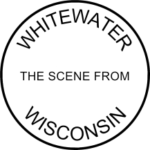 This is the sixth post in a series considering related local topics of cultures & communications within the city.
This is the sixth post in a series considering related local topics of cultures & communications within the city.
Years ago (in 2010), I wrote of a red-blue divide within the city, where some elections favored red-leaning voters, and some blue-leaning voters. See, Why Whitewater Isn’t a Progressive City; Why Whitewater’s ‘Conservatives’ Hold the City Tenuously.
Over time, the city proper has become more dependably blue. State and national political trends, affecting local demographics, have probably assured this result. See, The (Red) State, the (Blue) City.
Look at the last presidential election: Clinton carried the city, Trump carried the outlying towns within the area of the Whitewater Unified School District. (See, results from Walworth, Jefferson, and Rock Counties.)
Where once there was a divide between red and blue within the city, there is now a reliably blue city; the divide is now between the city and the smaller towns outside the city.
Older residents remember a more conservative city; that past won’t return. Current residents know that the towns nearby are more conservative than the city; that will stay true for the foreseeable future.
The city-towns divide represents things as they now are, and has consequences of economics, fiscal policy, education, and culture.
Previously: Parts 1 (introductory assumptions), 2 (population), 3 (oasis), 4 (demographics), and 5 (working age).
Tomorrow: Part 7 (How It Was Supposed to Be).
